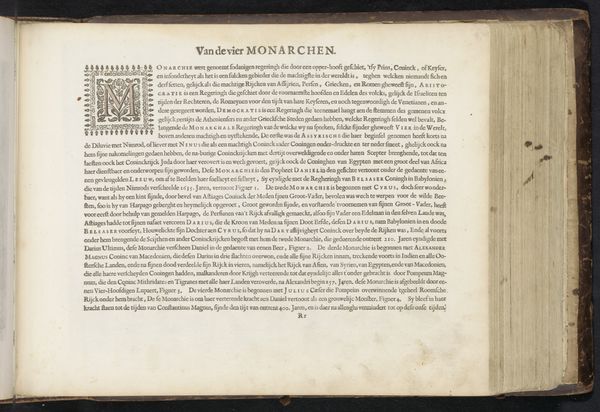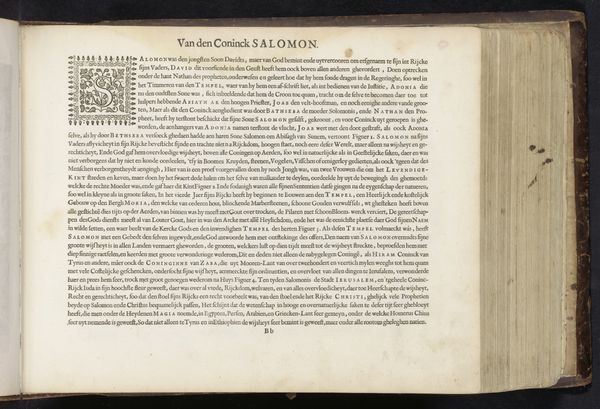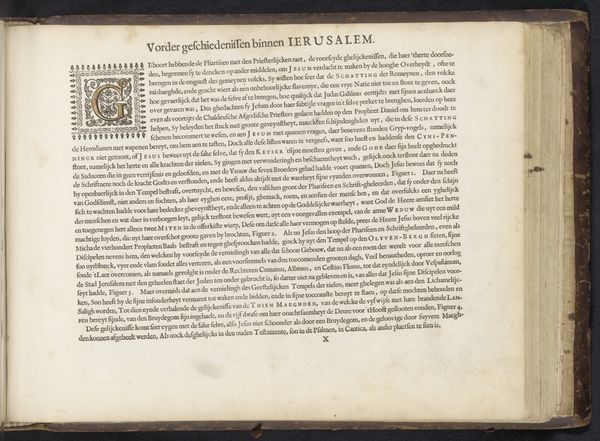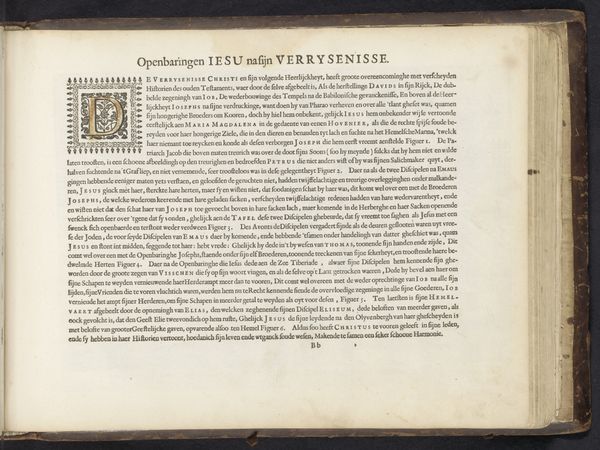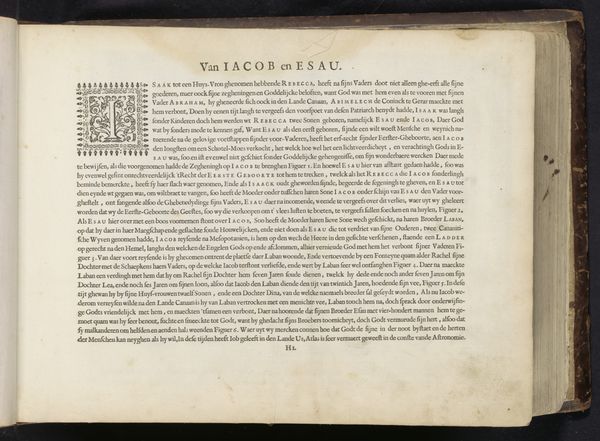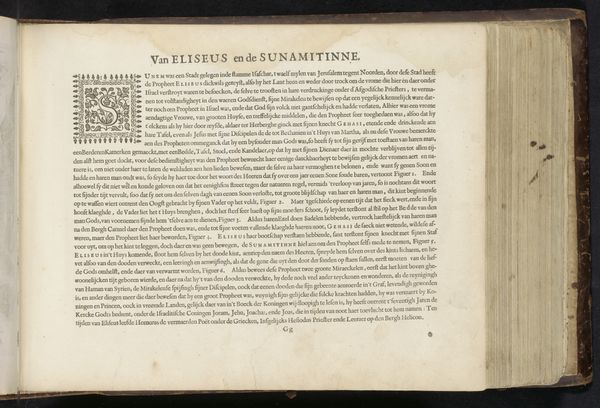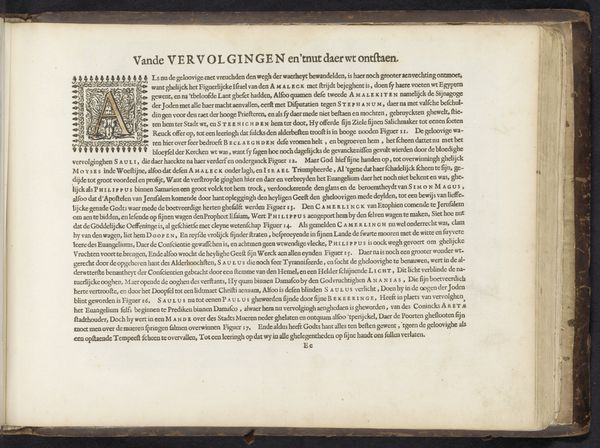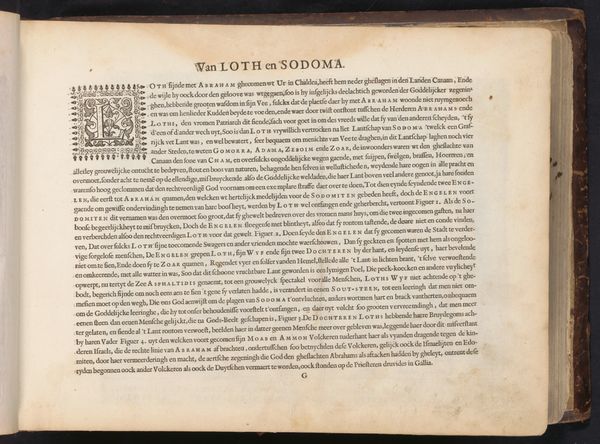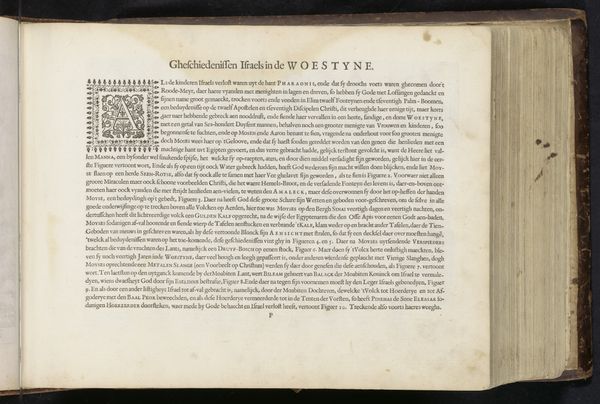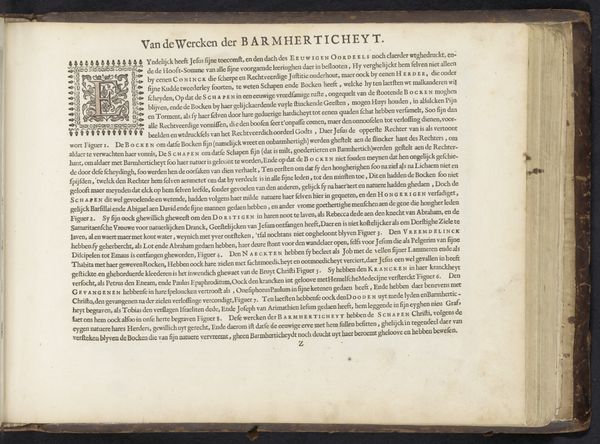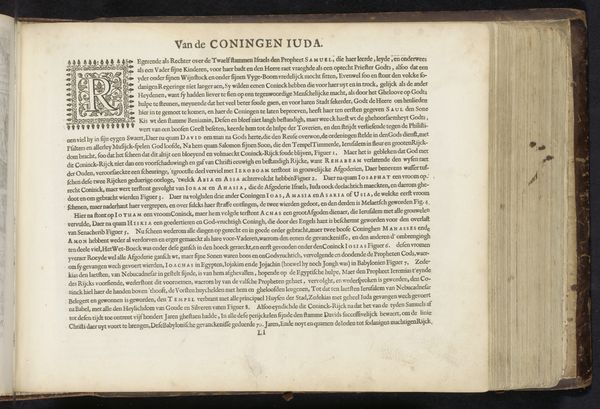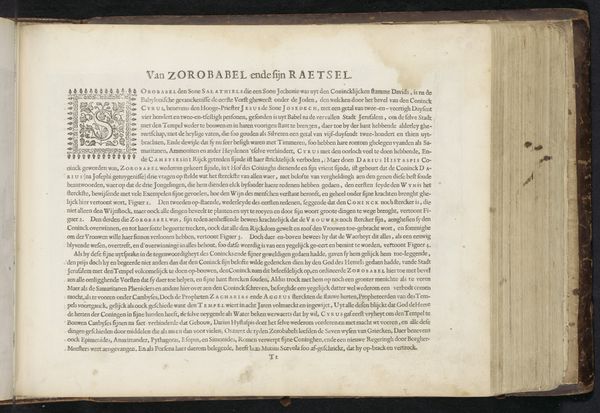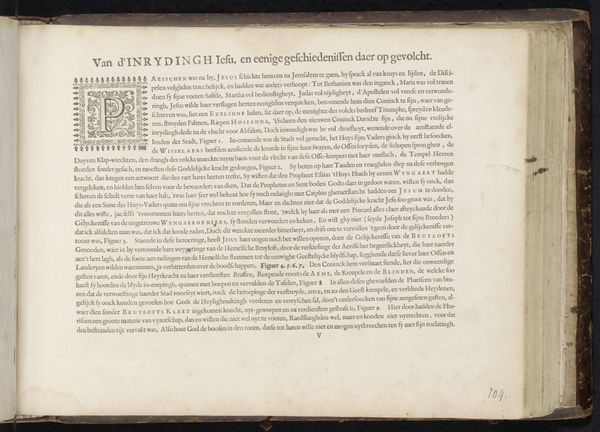
print, paper, typography, woodcut
#
dutch-golden-age
# print
#
paper
#
typography
#
coloured pencil
#
woodcut
#
historical font
Dimensions: height 257 mm, width 340 mm
Copyright: Rijks Museum: Open Domain
Jan Philipsz Schabaelje made this print, "Van Achab en Naboth," sometime before his death in 1656. It uses a biblical narrative to comment on contemporary society. Made in the Netherlands, it reflects the religious and moral concerns of the time. The story of Ahab and Naboth is a critique of power, greed, and injustice. Ahab, a king, desires Naboth's vineyard and conspires to have him killed to take it. Schabaelje uses this story to criticize abuses of power and the exploitation of the vulnerable. The print employs visual codes to convey moral messages, contrasting the piety of Naboth with the wickedness of Ahab and his wife Jezebel. Understanding this print requires historical research into the religious, social, and political context of the 17th-century Netherlands, including the role of the Dutch Reformed Church. The story of Ahab and Naboth becomes a mirror reflecting the tensions and anxieties of a society grappling with issues of justice, authority, and morality.
Comments
No comments
Be the first to comment and join the conversation on the ultimate creative platform.
